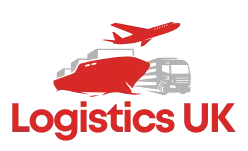Table of Contents
Workplace safety has evolved far beyond hard hats, fire drills, and “wet floor” signs. In the modern business landscape, safety is no longer just about preventing accidents—it’s about creating an environment where employees feel secure, valued, and supported in every aspect of their work life. With rapid technological advances, shifting workforce expectations, and an increased focus on holistic well-being, the definition of workplace safety is being redefined. For leaders managing operations, compliance, or people, understanding this evolution is critical for staying ahead and keeping teams protected.
Let’s take a closer look at how workplace safety is changing in 2025 and beyond—and what your business needs to know to stay prepared.
1. From Checklists to Culture: Building a Safety-First Mindset
Traditionally, workplace safety was synonymous with compliance—checking off items on forms, following standard protocols, and reacting to issues when they occurred. But that reactive model is no longer enough. Today’s organizations are prioritizing safety culture—an environment where every employee, from the frontline to the C-suite, takes ownership of safety.
This cultural shift empowers employees to report unsafe conditions, voice concerns without fear of retaliation, and actively participate in continuous improvement. It’s not just the safety manager’s job anymore. When safety becomes part of the company’s DNA, organizations see fewer incidents, improved morale, and stronger engagement across the board.
2. Technology as a Catalyst for Safer Workplaces
Technology is no longer a future add-on—it’s now central to how safety is managed and improved. Businesses are leveraging tools like AI-powered video analytics, IoT sensors, and machine learning algorithms to detect and address risks in real time. These solutions can flag unsafe behaviors, identify equipment anomalies before failures occur, and monitor compliance automatically.
Platforms like Arvist Vision AI are leading the charge in this area. By using intelligent video analysis and real-time alerts, Arvist enables businesses to proactively prevent incidents and make data-driven safety decisions. This kind of smart automation transforms safety from a reactive process into a predictive, preventative one.
3. Mental Health Joins the Safety Agenda
The conversation around workplace safety now includes mental and emotional well-being. Stress, anxiety, burnout, and fatigue aren’t just HR concerns—they’re safety issues. Employees who are mentally exhausted are more prone to mistakes, accidents, and disengagement.
Forward-thinking organizations are investing in mental health resources, stress management training, and wellness programs as part of their safety strategy. Encouraging work-life balance, offering flexible scheduling, and fostering open dialogue about mental health can reduce risk while building a more resilient workforce.
4. The Hybrid Work Challenge: Safety Beyond the Office
The rise of hybrid and remote work has blurred the boundaries of the traditional workplace. While this shift offers flexibility and convenience, it also introduces new safety considerations. At-home ergonomic issues, isolation-related stress, and cybersecurity vulnerabilities have taken center stage.
Businesses must now adopt a broader approach to safety that encompasses both physical and digital work environments. Providing remote ergonomics assessments, mental health support, and cybersecurity training are just a few of the ways companies are adapting to the new normal.
5. Rising Compliance Standards: Staying Ahead of Regulation
Regulatory bodies around the world are tightening safety requirements, demanding greater transparency, documentation, and accountability. Companies must be more agile than ever, with up-to-date policies and robust systems in place to remain compliant.
Keeping up with these changes manually can be overwhelming, which is why more organizations are turning to compliance automation tools. Solutions like Arvist Vision AI help businesses monitor safety performance, maintain audit trails, and respond to incidents in real time—all while reducing administrative burden and human error.
6. Data as a Safety Superpower
Today’s safety strategies are being shaped by data—not just experience or gut instinct. Real-time analytics, predictive modeling, and pattern recognition are enabling businesses to spot trends, address hazards early, and continuously improve.
By analyzing near-miss reports, sensor feedback, and historical incident data, companies can uncover hidden risks and implement targeted interventions. This data-driven approach doesn’t just prevent injuries—it boosts productivity, reduces downtime, and fosters a culture of continuous improvement.
Also Read: What is Personal Online Reputation Management? A Complete Guide
7. Engaging, Ongoing Safety Training
One-and-done safety training sessions are a thing of the past. Employees learn better—and retain more—when training is interactive, scenario-based, and delivered in manageable, ongoing segments. Whether it’s through gamified learning apps, VR simulations, or microlearning modules, the goal is to make safety training relevant, engaging, and part of everyday operations.
Organizations that invest in quality training experiences see measurable improvements in safety behavior, employee confidence, and overall performance. When workers feel equipped and educated, they’re more likely to act safely and contribute positively to the safety culture.
Final Thoughts
Workplace safety is no longer a box to check—it’s a dynamic, evolving commitment that touches every part of an organization. From digital transformation and mental wellness to remote work and regulatory shifts, businesses must adapt to a broader, more proactive view of what it means to keep people safe.
Investing in smarter tools like Arvist Vision AI, fostering a culture of safety ownership, and staying informed about emerging risks can help organizations protect their teams—and thrive in a competitive, fast-moving world.
In the end, safety isn’t just about compliance. It’s about care, confidence, and culture. And in 2025, that makes all the difference.

